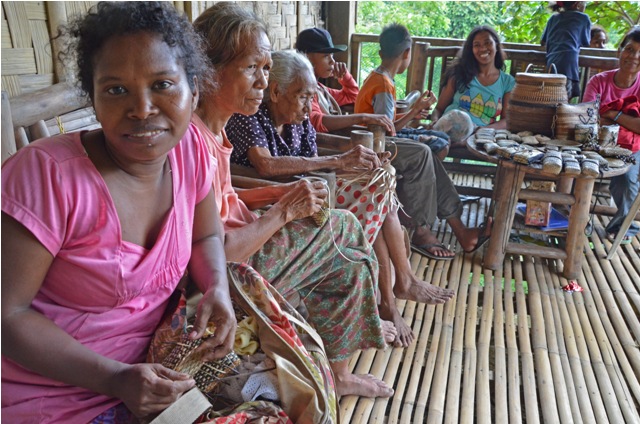The Aeta community of Sitio
Nagpana lies in Barangay Lipata, 12 kilometers from the poblacion of Barotac Viejo.
The community lies hidden from view to those visiting the area.
Everything about the Aeta
community reflects sensitivity to the environment and respect for the area's
traditional Aboriginal owners since the 1950’s. Early settlers were said to
have come from the neighboring provinces of Antique and Guimaras. The sitio covers
938 hectares of verdant forest land where 200 hectares is identified as a “reserved
area” for its watershed and 40 hectares is intended for housing and its school.
Presently, it has a population of 741 aetas living in 168 houses.
 |
| photo by JV Perez (PALI) |
Framed by stunning mountain views, it is home to Nagpana Falls where guests can enjoy a
host of activities revolving around it, while still having time to explore the
spectacular scenery surrounding the community. It has a pavilion with
two rooms that can accommodate overnight stays with ten persons per room. It
has toilet and bath with running water coming from a hose that is connected
from a spring situated on the upper portion of the Nagpana Falls.
Visitors to Nagpana have the privilege of touring through
indigenous guided- walks with a knowledgeable Aeta guide in the person of Mrs.
Raquel Mateo who provides insight in to the Nagpana landscape and can enhance
their experience through a showcase of its indigenous craft of nito-weaving.
The nito vine is a richly-colored
tropical vine coming from the fern family. It is a forest vine that grows as a
secondary forest cover clinging to trees and rocks. The vine must be gathered
first then exposed to sunlight to dry. As a vine material, it does not need to
be treated by soaking, scraping or hacking processes to enhance its natural
beauty and color. The elements are mostly flat flexible strips popular for in
matting.
The weavers of
Nagpana uses this to produce baskets, hats, bags, coin purses, leis, coasters,
placemats, bracelets and even rings. It is even used as inlay material for
table tops and furniture accessories exported abroad. Weaving nito is this aeta
community’s primary means of increasing their income. The Nagpana Nito Weavers
Group established in 2005 is currently made up of 42 members.
The
indigenous Nagpana people are very much aware of their cultural and natural
heritage and the roles it plays in their daily lives. Thus, their identity as a
community is primarily dictated by the heritage resources that they are blessed
with.
With indigenous tourism, we must understand the
important role we play in the wider community and the need to maintain good
relationships with all of our stakeholders including indigenous and community
groups, non-government organizations and government authorities.
It
is essential for policy makers of to set the limit of tourist activities in
fragile sites such as Nagpana where their cultural rights within its
well-preserved environmental setting should be enforced by law. The numbers of tourists must also be strictly
controlled as well as strictly regulate tourist behavior by instituting clear
and strict rules regulating tourism activities in the community. These regulations should be community-derived
and transparently enforced. Profits must
be kept in their community. The tourism industry should understand the
regulations and the reasons for them, and be satisfied that the fair and
equitable enforcement of the rules of these rules, and well as the uses of the
revenues levied from the industry are used to promote the industry through the development
of necessary infrastructure.
Tourism
practitioners must focus on raising the cultural awareness among their policy
makers and the community members, and in having a clear understanding of the
impacts and risks of tourism development. With a good understanding of the
cultural resource and its economic potentials, the local government can plan on
how to best attract tourist revenue while sustain its heritage resources, in
particular, and the support the services that the municipality is required to
provide to sustain tourism.
The
municipality of Barotac Viejo has many resources, both cultural and natural,
that make it extremely attractive for development as a tourist destination. Know
more about the Aeta community of Nagpana in Barotac Viejo on September 4-8,
2012 at the fountain area of Robinsons Place Iloilo as the municipality
supports the 8th Tumandok for the celebration of tourism month of
the Iloilo Provincial Government. For more information, please contact Mrs.
Lorie Ann Dumdum-Municipal Tourism Officer, Barotac Viejo at 09995796398.







I enjoyed reading this article.
ReplyDeletePAKI TRANSLATE IN TAGALOG
ReplyDeletePAKI TRANSLATE IN TAGALOG
ReplyDelete